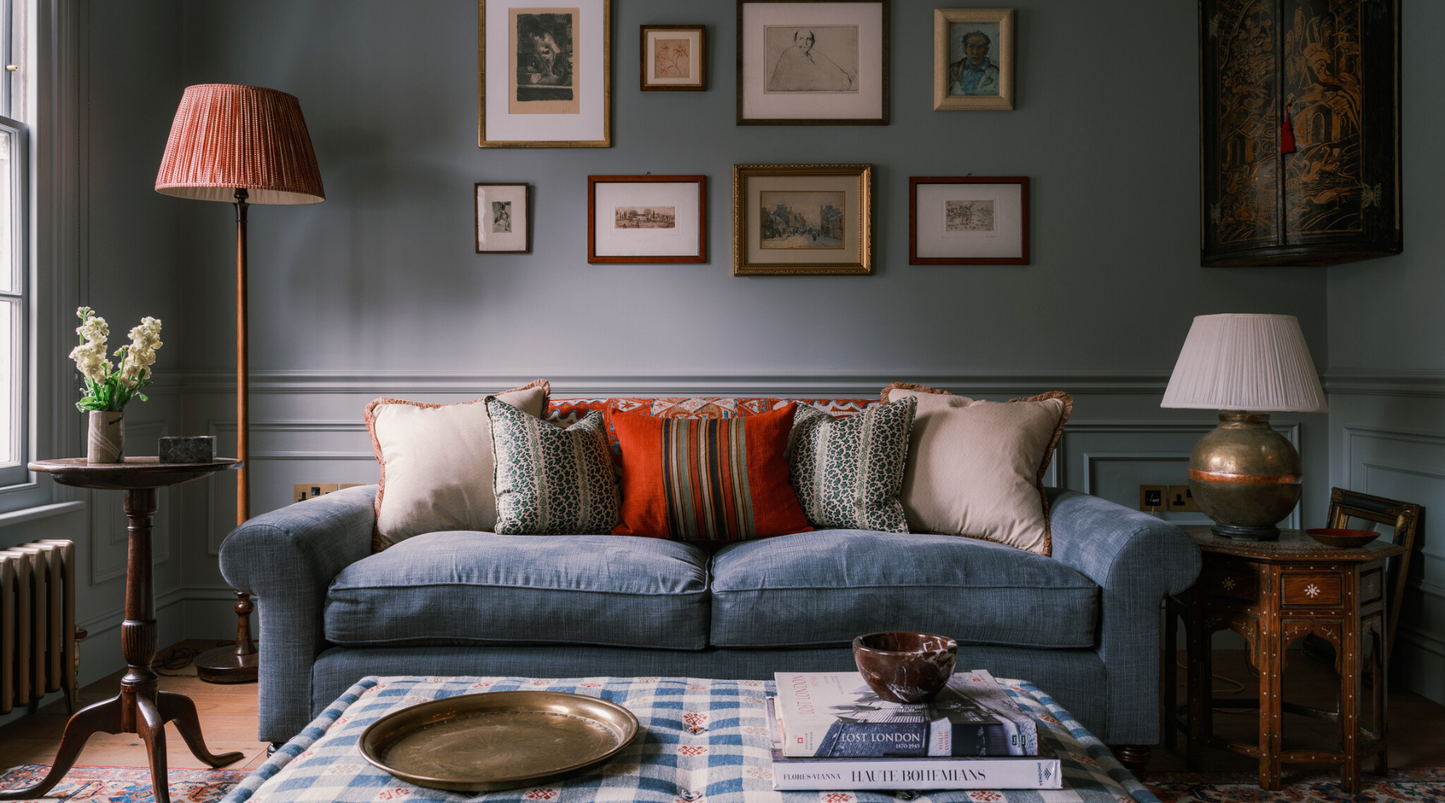
This time round I had the privilege of quizzing the wonderful Anna Haines on her passion and unique way she incorporate vintage textiles into her work. Anna established her London interior design practice 12 years ago. Her style has a classic sensibility that is both comfortable and elegant whilst retaining an aesthetic sympathy to heritage. She combines her passion for colour, textiles, antiques and art to create authentic spaces which reflect the personalities of her clients and the way they live. Here's what she had to say…
How do you go about incorporating them into your work?
I like to weave antique textiles within most schemes of a project, either textiles that are part of my own collection and I think the colours work particularly well, or that I purposely source for the space.
How best to display them?
Gosh! All manner of ways. It can be as simple as a textile draped across the arm of a sofa to break up the density of fabric, on a headboard, leading edges to curtains or as cushions, on a footstool or a Welsh blanket on a bed!
Where to start when using vintage textiles? Can they inspire a whole scheme?
Absolutely. We are using a vintage jajim to upholster a headboard. The umber and burnt orange tones in the jajim will be sensitively reflected in textures and fabrics throughout the room.
Unique creative ways of working with vintage textiles?
We like to use antique silks to make a lampshade for example. Cotton and tighter weave fabrics also work well. Framing textiles is also a wonderful way to incorporate more exquisite textiles into your scheme. It allows you to see the detail in more elaborate textiles or to show off fragments which are too fragile for upholstery.
Why do you love working with vintage textiles?
They help take the newness out of a space and can ground a scheme if becoming too contrived or ‘matchy’. Vintage textiles are almost always one-offs and come with their own story. They are conversation pieces when people walk into a room which to me feels welcoming and enriches a space.
Antique textiles offer individuality and add that attractive sense of layering within a space. They can break up the stuffiness and bring a bit of old school charm.
What would your top 3 tips be for anyone looking to start using vintage textiles?
Start by buying what you are interested in. Find pieces that appeal to you either because of the colour, scale, pattern or era.
Try draping a Suzani over the back of a sofa. It will immediately break up the bank of fabric and introduce colour that you can consider either introducing or paring back in other areas.
Very simply buy a welsh blanket. They are woven as a double cloth so reversible, warm, hardwearing, colourful and beautiful on a bed!
How has the fabric and textile industry evolved since you became a part of it and what do you see and hope for the future of it?
Instagram has nurtured and helped build relationships with antique and textile dealers in a very positive way. I think more designers are wanting to source from unique and independent sellers; many clients we work with want to feel connected to the products we might be sourcing for their homes.
It’s important to support relationships with dealers and suppliers but also to encourage sourcing from smaller artisan designers.


